UPSC Daily Current Affairs: 22 July 2024 | Current Affairs & Hindu Analysis: Daily, Weekly & Monthly PDF Download
GS2/International Relations
Rajasthan's Tribal Communities Recognized for Tackling Global Challenges at U.N. Event
Source: The Hindu

Why in news?
Recently, a High-Level Political Forum (HLPF) on Sustainable Development was held under the auspices of the U.N. Economic and Social Council (ECOSOC).
- The solutions offered by indigenous tribal communities in Rajasthan to global challenges, and their role in the execution of policies were highlighted at this forum.
UN Economic and Social Council (ECOSOC)
About
- It is one of the six principal organs of UN which was established by UN Charter (1945).
- It is responsible for the direction and coordination of the economic, social, humanitarian, and cultural activities carried out by the UN.
- Decisions are taken by simple majority vote. The presidency of ECOSOC changes annually.
Members
- It has 54 members which are elected for three-year terms by the General Assembly.
- Four of the five permanent members of the Security Council have been continuously re-elected.
- This is because they provide funding for most of ECOSOC’s budget, which is the largest of any UN subsidiary body.
Function
- ECOSOC is responsible for coordinating the social and economic fields of the organization, specifically in regards to the 15 specialized agencies, the five regional commissions under the jurisdiction, the eight functional commissions.
- It also serves as a central forum to discuss the international social and economic issues and formulating policy recommendations addressed to the member states and the United States system.
Background
- Sustainable Development was held at the United Nations headquarters in New York.
- The UN Conference on Sustainable Development (Rio 20), through its outcome on "The Future We Want", established the HLPF in 2012
- The HLPF is the central platform for follow-up and review of the 2030 Agenda for Sustainable Development and the SDGs.
- It was held under the auspices of the U.N. Economic and Social Council (ECOSOC).
Theme
- ‘Reinforcing the 2030 agenda and eradicating poverty in times of multiple crises: The effective delivery of sustainable, resilient and innovative solutions’.
- A ministerial declaration adopted at the forum called for renewed impetus to achieve the Sustainable Development Goals (SDGs).
GS2/International Relations
ICJ’s observation about Israel’s occupation of West Bank and East Jerusalem
Source: Indian Express
Why in news?
The International Court of Justice (ICJ) recently stated that Israel's occupation of the West Bank and East Jerusalem violates international law. The ICJ further asserted that Israel's presence in Palestinian territories should end as soon as possible.
- Israel has occupied the West Bank and East Jerusalem since the Six-Day War in 1967. Prior to this, the territories were under Jordanian control.
International Court of Justice (ICJ)
About
- The ICJ is the main legal body of the United Nations (UN).
- It was formed in June 1945 under the UN Charter and began operations in April 1946.
- The Court is situated at the Peace Palace in The Hague, Netherlands.
- It is the only UN principal organ not based in New York City.
- English and French are the official languages of the ICJ.
Role
- The ICJ settles legal disputes between states according to international law.
- It also provides legal opinions on questions referred by authorized UN entities and agencies.
Judges
- The ICJ has 15 judges serving nine-year terms, elected by the UN General Assembly and Security Council.
- The court's president and vice-president are chosen for three-year terms by secret ballot.
- Judges can be re-elected.
Members and Jurisdiction
- All UN members are parties to the ICJ statute, but consent is needed for jurisdiction over disputes.
- ICJ's judgment is final and binding on involved parties.
- No provision for appeal exists, only interpretation or revision based on new facts.
- ICJ relies on countries' willingness to comply with its orders.
Meaning of occupation in international law
- The widely accepted definition of occupation involves a territory under the control of a hostile army.
- An occupation must be temporary without transferring sovereignty to the occupying power.
- Obligations towards inhabitants include providing essentials and prohibiting certain actions.
ICJ's opinion on Israel's occupation
Background
- In December 2022, the UN sought the ICJ's opinion on Israel's actions in Palestinian territories.
- ICJ's recent opinion highlighted concerns regarding Israel's settlement policy and practices.
On prolonged occupation
- The legality of an occupation is determined by policies and practices, not duration.
On settlement policy
- Israel's settlement policy in occupied territories violates international law.
- Issues include forced displacement and breaches of international conventions.
On annexation of Palestinian territories
- Israel's actions imply permanent control over these territories.
- Such policies violate international regulations, impacting the legality of the occupation.
On discriminatory legislation and measures
- Israel's legislation results in systemic discrimination against Palestinians.
- This violates various international covenants and conventions.
On self-determination
- Israel's actions violate Palestinians' right to self-determination.
- This undermines international principles of law.
On future course of action
- ICJ recommends immediate cessation of the illegal occupation and other actions by Israel.
- It advises against recognition of occupied territories as part of Israel.
GS3/Economy
Patent Ecosystem in India
Source: PIB
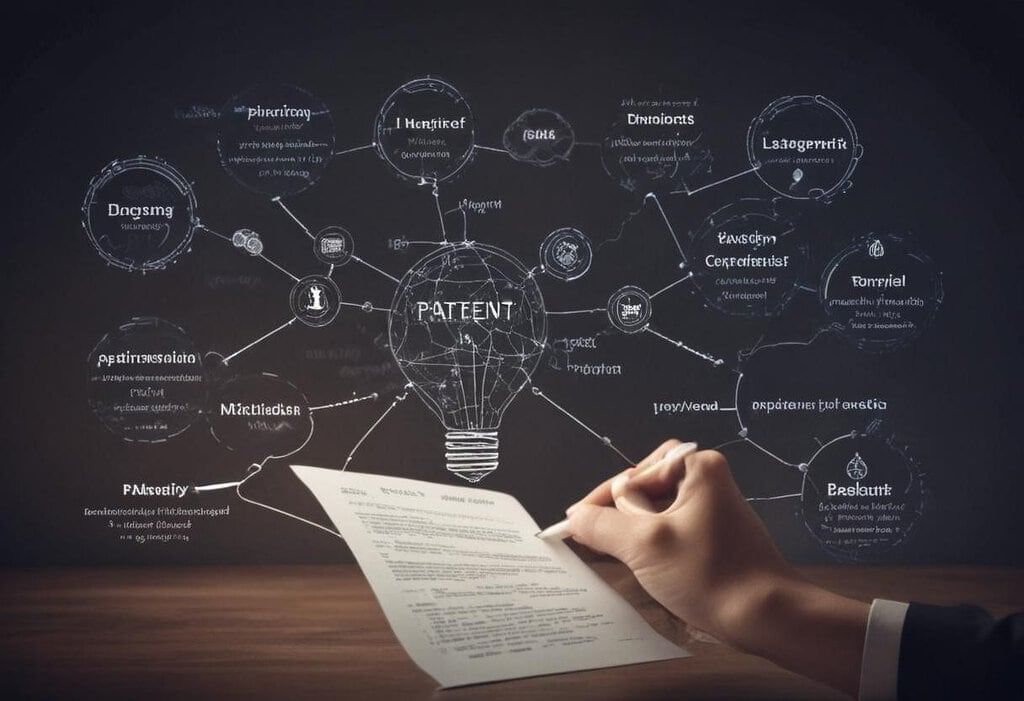
Why in News?
For the first time, domestic patent applications in FY24 have surpassed those from foreign applicants, largely due to a surge in applications in fields like computer science, IT, pharmaceuticals, and chemicals. Still, foreign entities hold a significant portion of the patents awarded in India - nearly two-thirds of all applications that are approved.
What is a Patent?
- A patent is an exclusive right provided by the government to the applicant for his/her disclosed invention of an industrial product or process that must be Novel, Non-obvious, Useful, and Patentable as defined by national law.
- A patent provides a technological solution to a technical challenge. The government grants legal protection to inventions for a limited time, i.e., 20 years from the date of filing.
- What is and is not patentable in India is explicitly stated in the Indian Patents Act 1970. The Controller General of Patents, Designs & Trademarks (CGPDTM) is considered as the principal officer responsible for administering the patent system in India.
Domestic Patent Applications in India:
- Steadily increasing since FY19: Residents' share of all requests submitted to the patent office increased from 34% in FY19 to 53% in FY24 when it came to patent applications.
- Issues with domestic patent applications: These have not yet translated into approvals because of the quality of patent applications as well as the patent ecosystem in the country.
- The quality of patent approval suffers from a lower number of patent examiners in the country (597 who approved over 1 lakh patents last year, whereas Germany has 821 and the US over 8,000 examiners).
- Also, the trend is reflective of the fact that patents often come with a built-in time lag due to various procedural timeliness.
Foreign Patents in India:
- Foreign patents approvals in India highest in any major economy globally: According to the CGPDTM data, patent approvals (an indicator of R&D activity) continue to be skewed in favor of foreign entities, with global IT giants (Qualcomm Inc., Samsung, Huawei, and Apple) taking the lead.
- Patents approved for non-resident Indians and entities stood at 76.46% in 2022, which is among the highest in any major economy globally.
- The World Intellectual Property Organization (WIPO) data showed that the comparable number in the case of China stood at 12.87%.
- Reasons for high foreign patents in India: The wide gap between domestic and foreign patent holders reflects the inefficiencies in India's R&D capabilities. Lower R&D activity results from weak private investments and stagnant government spending.
India's R&D Spending and its Impact:
- Stagnation in India's spending on R&D as a percentage of GDP: As per World Bank data, it has slipped to 0.65% in 2022 (from 0.83% seen in 2008) and this is much lower than the global average of 2.62%.
- This has resulted in Indian manufacturing depending on imported machinery, parts, and foreign technicians to fulfill export orders.
- Notably, India has a trade deficit with 8 out of the top 10 trade partners. India's imports in FY24 from China alone crossed $100 billion.
Government Initiatives to Boost Intellectual Property (IP) Ecosystem in India:
- Scheme for Startups Intellectual Property Protection (SIPP): The scheme is designed to promote and mentor new and emerging technologies among startups. It aids them in protecting and commercializing them by offering access to high-quality IP services and resources.
- National Intellectual Property Rights (IPR) Policy: It was launched in 2016 by the Union Ministry of Commerce and Industry's DPIIT to promote a more innovative and imaginative Bharat.
- Draft Model Guidelines on Implementation of IPR Policy for Academic Institutions: Its mission is to establish an efficient, fair, and transparent administrative process for ownership control, assignment of IP rights, and share revenues generated by IP created and owned by the academic institution.
- National Intellectual Property Awareness Mission (NIPAM): It aims to educate 1 million students on intellectual property and its rights.
GS3/Economy
Govt Considers Rs 50,000 Crore Scheme for Agricultural Reforms
Source: Indian Express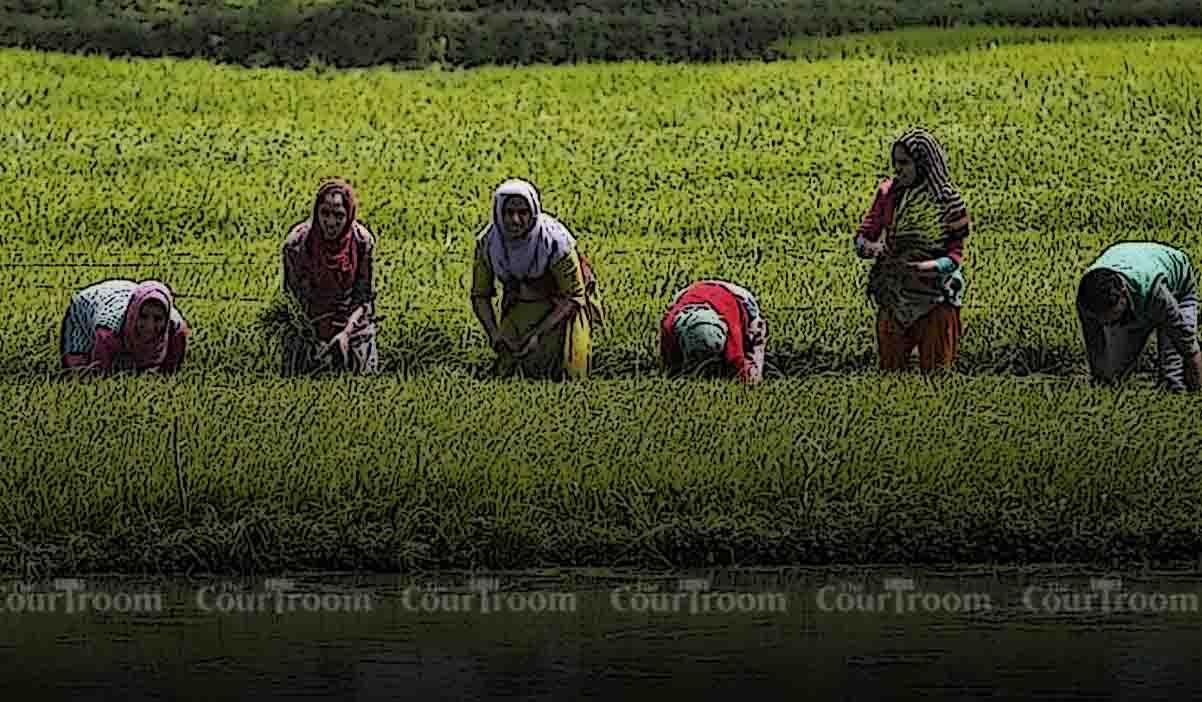
Why in News?
The Central Government is contemplating a fresh scheme with a budget of Rs 50,000 crore to encourage states to embrace agricultural reforms.
Challenges Faced by Agriculture Sector in India
- Access to Credit & Finance: Small farmers encounter difficulties in securing cost-effective loans, restricting their capacity to purchase modern equipment, quality seeds, and fertilizers, impacting their productivity.
- Small Landholdings: Many farmers possess small, fragmented plots, complicating the adoption of modern farming methods and diminishing productivity.
- Outdated Farming Practices: Several farmers persist with traditional techniques due to limited knowledge and aversion to change, impeding the uptake of advanced methods.
- Water Scarcity & Irrigation: Reliance on monsoon rains exposes agriculture to droughts and irregular rainfall patterns. Access to irrigation and water management is crucial, especially in regions with scarce water resources.
- Soil Degradation & Erosion: Utilization of chemical fertilizers, pesticides, and poor land management practices degrades soil quality, diminishing fertility and productivity.
- Inadequate Agricultural Infrastructure: Lack of storage facilities, cold chain infrastructure, well-connected rural roads, and market accessibility leads to post-harvest losses and increased production costs, constraining farmers' ability to secure fair prices.
- Market Volatility & Price Fluctuations: Fluctuating prices due to weak market connections and lack of price information expose farmers to exploitation and uncertain returns.
- Climate Change & Natural Disasters: Unpredictable weather patterns, climate change, floods, and droughts result in crop losses and heightened risks for farmers.
- Limited Access to Technology & Research: Farmers confront restricted access to modern technologies and research, hindering the adoption of innovative practices. They require enhanced knowledge, training, and affordable technological solutions.
- Lack of Farmers’ Empowerment: Many farmers lack representation in policy-making, leading to initiatives that may not effectively address their unique challenges.
About NITI Aayog’s Proposal
- Proposal by NITI Aayog:
- Approximately three years post the repeal of the three farm laws in November 2021, the central government is devising a new scheme with a Rs 50,000 crore allocation to encourage states to adopt agricultural reforms.
- Initiative Details
- Central funding for states to implement reforms in agriculture marketing, contract farming, and land leasing.
- The proposal was introduced by NITI Aayog officials to the Prime Minister’s Office.
- Reform Measures Under Consideration
- Passing the long-pending Seed Bill.
- Increasing public investment in agriculture to 5% of Agriculture GVA.
- This proposal echoes a suggestion made by the 15 Finance Commission in its 2020-21 report, emphasizing performance-based incentives for states undertaking agricultural reforms. States could receive financial rewards for implementing key reforms in agricultural markets, promoting competition, and attracting private sector investments.
GS-II/International Relations
On the student protests in Bangladesh
Source: The Hindu

Why in News?
At least 130 people have died in clashes during student protests over government job quotas in Bangladesh.
Why are students in Bangladesh protesting?
- Students are demonstrating against the quota system for government jobs. They are particularly unhappy about the 30% reserved for freedom fighters and their descendants, as they believe this restricts opportunities based on merit.
- The protests intensified when the Supreme Court reinstated the quota system, going back on the previous decision to remove it. Students are calling for a more fair and inclusive quota system.
What makes the 30% quota for freedom fighters and their descendants an emotional issue for the Awami League?
- The quota system was initially introduced by Sheikh Mujibur Rahman. Continuing it is seen as a way to honor his legacy and the sacrifices of the freedom fighters.
- The Awami League sees the quota as a tool to maintain political support within the bureaucracy and uphold political allegiance, closely tied to the party's historical and ideological narrative.
How did the protests turn violent?
- Violence escalated after Prime Minister Sheikh Hasina referred to the protesters as "razakars" or traitors. This angered the students, leading to violent clashes with the police and Rapid Action Battalion (RAB).
- Matters worsened to the extent that the military had to step in to control the unrest, further escalating the violence and clashes between protesters and authorities.
Have there been allegations of misuse of quotas?
- There have been accusations that the quota system has been exploited, with reservations being granted to party members rather than deserving descendants of freedom fighters.
- Originally intended for freedom fighters and war survivors, the quota system has faced criticism for expanding to include broader categories over time. This has raised concerns about fairness and proper utilization.
What is the suggested way forward?
- The Bangladeshi government should look into implementing a transparent and balanced reform of the quota system that addresses both merit-based selection and the need for reservations.
- It is crucial to establish mechanisms that oversee the implementation of quotas and prevent any potential misuse.
GS-II/International Relations
The Importance of Both Quad and BRICS
Source: The Hindu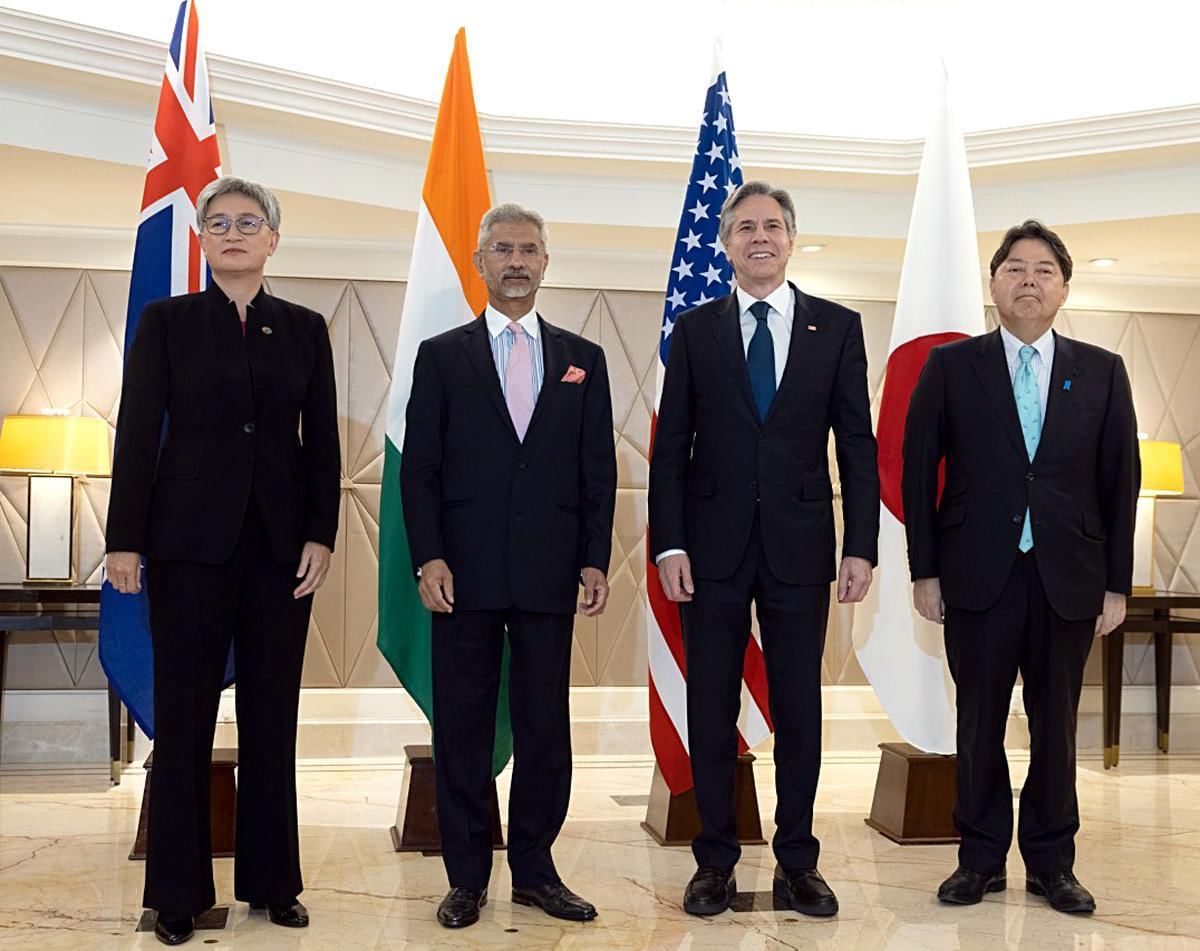
Why in News?
Recently, the Quad Foreign Ministers’ meeting in Japan highlighted the UNSC’s paralysis, ongoing violations of international law, and the growing influence of China and an axis of Russia, China, North Korea, and Iran.
Present State of the UNSC:
- Current Situation of the United Nations Security Council (UNSC): The UNSC is stuck and not working well. It can't solve big world problems. Efforts to change the UNSC have stopped, so it can't adjust to new global situations.
- Breaking International Laws Without Punishment: Rules of the world are being broken in conflicts like the Ukraine war and the attack on Gaza by Israel. The UNSC can't make strong decisions, which has led to people not caring about its power and rules.
India's Role in QUAD:
- How India Helps in QUAD: India working with other countries in QUAD makes its relationships with them stronger. Together, they can work on sea safety, helping in disasters, and giving aid.
- Creating Plans for the Indo-Pacific Area: QUAD's main goal is to reduce China's aggressive actions in the Indo-Pacific region. India can lead in keeping the area safe.
- Working Together on Economy: The QUAD countries are joining forces to improve their economic connections, like building things in the Strait of Malacca and finding new ways to help Indo-Pacific countries with money.
- Helping in Emergencies: India has been helping in emergencies, like with Operation Sanjeevani, giving medical help to countries in the Indo-Pacific during the COVID-19 pandemic.
Positive Aspects of BRICS:
- Supporting Cooperation Between Developing Nations: BRICS is a big effort by countries that are not in the West after the Cold War. It brings together strong economies from different parts of the world.
- Increasing Influence in World Governance: With about 40% of the world's people, BRICS countries can have more say in world decisions and make more friends internationally through this group.
- Boosting Economies During Challenges: While COVID-19 is still causing problems, BRICS has become better at helping its members' economies during hard times.
- Trying Out New Financial Ideas: BRICS is working on new money ideas, like the New Development Bank (NDB) and the Contingent Reserve Arrangement (CRA).
BRICS in the G20:
- BRICS in the G20 Group: BRICS always asks for thinking about development in the G20 plans. They say the G20 should focus on helping developing countries, especially in building infrastructure and supporting social needs.
- Promoting Environment-Friendly Growth: BRICS countries want money to be used responsibly for green and sustainable growth. Projects like the NDB are about making lasting infrastructure that helps reach Sustainable Development Goal 9.
Final Thoughts:
- We should back changes to the UNSC to make it work better. This means adding more countries to the main group to show today's global situation and making faster decisions to handle conflicts better.
GS-I/History and Culture
National Flag Day, 2024
Source: The Indian Express
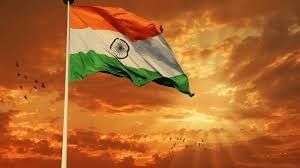
Why in News?
On 22nd July in 1947, the Constituent Assembly of India adopted the National Flag.
About the National Flag Day
- The Constituent Assembly gathered in New Delhi, led by Dr. Rajendra Prasad.
- They had been meeting since December 9, 1946, discussing various topics.
- The first item on the agenda was Pandit Jawaharlal Nehru's Motion about the Flag.
Jawaharlal Nehru's Proposal for the National Flag
- India's initial Prime Minister, Jawaharlal Nehru, proposed that the National Flag consist of a horizontal tricolor of deep Saffron (Kesari), white, and dark green in equal parts.
- In the middle of the white stripe, there would be a navy blue Wheel representing the Charkha.
- The Wheel's design was inspired by the Chakra from the Sarnath Lion Capital of Ashoka.
- The diameter of the Wheel was to be similar to the width of the white band.
- The aspect ratio of the Flag was to be 2:3.
Adoption of the Proposal
- The proposal was unanimously accepted by the Assembly.
- Nehru spoke about the historic significance and struggles embodied by the Flag for those fighting for freedom.
- He stressed the importance of addressing issues like hunger, lack of clothing, and opportunities for growth for all Indians.
- Nehru highlighted the victory over imperialist rule and the end of British dominance.
Reactions and Support
- There were no major objections to Nehru's Resolution.
- Several members paid tribute to the Flag and supported the Resolution.
- Dr. P S Deshmukh suggested retaining the original tricolor with the Charkha but respected the House's decision.
Back2Basics: History of Our National Flag
- The first Indian national flag was unveiled on August 7, 1906, in Kolkata at Parsee Bagan Square (Green Park).
- It featured three horizontal stripes of red, yellow, and green, with "Vande Mataram" inscribed in the center.
- Symbols on the flag included the sun, a crescent moon, and eight half-open lotuses.
- It is believed to have been designed by freedom activists Sachindra Prasad Bose and Hemchandra Kanungo.
Indian Flag in Germany / Home Rule Movement Flag / Version by Pingali Venkayya
- In 1907, the Indian flag was raised in Germany by Madame Cama and exiled revolutionaries.
- Dr. Annie Besant and Lokmanya Tilak introduced a new flag in 1917 during the Home Rule Movement.
- Pingali Venkayya is credited with designing the modern Indian tricolor.
- Venkayya's design was influenced by interactions with Mahatma Gandhi and his proposal at the All India Congress Committee in 1921.
GS-III/Science and Technology
What is the Dyson Sphere?
Source: The Hindu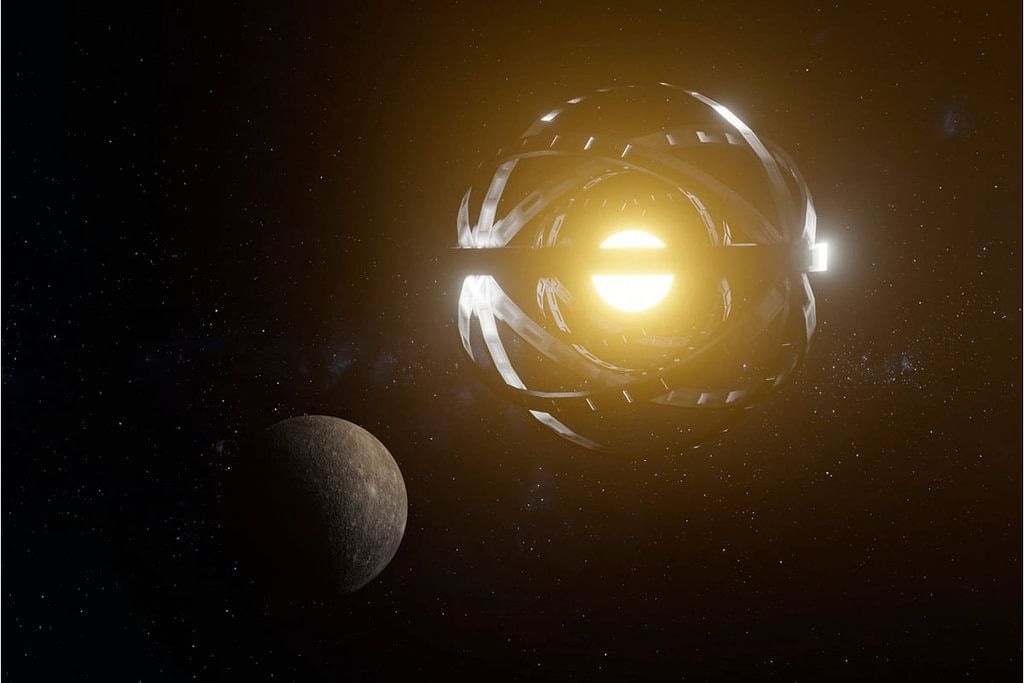
Why in News?
Recently, astronomers have made progress in finding possible candidates as Dyson Sphere, sparking new excitement and debate about extraterrestrial life.
What is a Dyson Sphere?
Imagine you're an astronomer seeking alien life and stumble upon a star enveloped by solar panels. This setup, gathering vast solar energy, is called a Dyson sphere.
- The Origin of the Concept: The idea is credited to Freeman Dyson, a theoretical physicist who lived between 1923 and 2020.
- Dyson's Vision: Dyson proposed that advanced societies would need to capture a star's energy by building a spherical network of solar collectors around it.
- Signs of Intelligence: He suggested that these colossal structures could be detected by the infrared radiation they emit, hinting at intelligent life.
- Focusing on Freeman Dyson: Freeman Dyson, who lived from 1923 to 2020, was a well-known British-American physicist and mathematician recognized for his work in various scientific fields.
- Dyson's Contributions: Born on December 15, 1923, in England, he notably introduced the concept of the Dyson Sphere—an imaginative construction meant to enclose a star for energy capture.
- Beyond Science: Apart from his scientific pursuits, Dyson was a respected futurist and writer, delving into topics like space exploration, alien life, and the destiny of humankind.
- Career and Legacy: Dyson spent a significant portion of his professional life at the Institute for Advanced Study in Princeton, known for his interdisciplinary scientific approach.
|
38 videos|5293 docs|1118 tests
|
FAQs on UPSC Daily Current Affairs: 22 July 2024 - Current Affairs & Hindu Analysis: Daily, Weekly & Monthly
| 1. What is the role of Rajasthan's Tribal Communities in tackling global challenges? |  |
| 2. What did the ICJ observe about Israel's occupation of West Bank and East Jerusalem? |  |
| 3. What is the background of the article on Rajasthan's Tribal Communities and the ICJ's observations? |  |
| 4. Who are the judges and members of the ICJ mentioned in the article? |  |
| 5. What is the most widely accepted definition of occupation according to the article? |  |
















